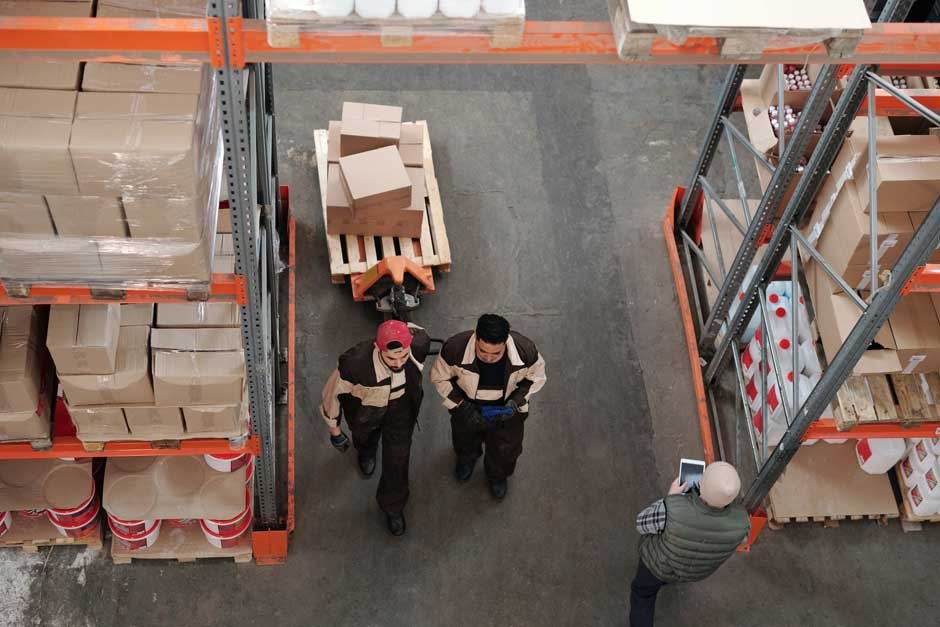Introduction
Creating a warehouse floor plan is a crucial part of every warehouse manager’s job. A well-planned space will allow employees to work more efficiently, which means they’ll be able to complete tasks quicker and with fewer mistakes. It also helps reduce the risk of accidents and injuries. By following these tips, you can create an efficient floor plan that will help streamline your business processes while keeping your workers safe:
Allocate space for lifting equipment
One of the most important things to consider when creating a warehouse floor plan is whether or not there will be room for lifting equipment. If you need pallets with heavy loads, you’ll need a lift! Make sure your lift can handle up to x weight and have at least y cubic feet of space for it to function properly. Other types of lifting equipment that you may need include:
- Forklifts
- Pallet jacks (usually used with pallets)
- Indoor scissor lift rental
If these aren’t available in your warehouse, try looking into renting them from outside sources, they might be cheaper than buying one outright if only used occasionally.
Ensure all pallets are easily accessible
To ensure pallets are easily accessible, you must first determine how many different sizes of pallets you need to store. Then, you must create a floor plan that reflects this information.
There are various sizes of pallets that you can find at stores like these pallets for sale in Melbourne. The most common type of pallet is 48x40x20 inches, but there are also 24x24x48-inch and 48x24x48-inch pallets. The biggest challenge in creating a warehouse floor plan is accommodating these different sizes while still allowing enough room for forklifts to move freely around the space.
When designing your warehouse floor plan, you should consider ways to maximize space usage by placing multiple sizes of pallets side by side. For example, if you have a lot of 24x24x48-inch pallets, but also some 48x40x20-inch ones, you can place them next to each other so that they don’t take up as much room on the floor.
Make sure there’s enough space in those areas so that people can walk around freely without bumping into each other or getting caught up in equipment.
Identify heavy equipment owning or renting needs
Once you understand the size of your warehouse and what kind of equipment you need, it’s time to start planning. The first step is identifying all the equipment that needs to be moved around in the warehouse. If you own heavy equipment, this will be much easier than if you rent it out daily.
If you are renting your warehouse space from another company (i.e., Amazon), then their inventory will dictate how many trucks, forklifts, and other vehicles are available at any given time. This information can also determine how many people have access to these tools, so they must know who has permission to operate each piece of equipment in case something goes wrong or there is an accident on site.
Also, when creating a warehouse floor plan, you should include all of the equipment that will be used within your warehouse. This includes forklifts, pallet jacks, dollies, and other items used for moving products around inside your building.
For instance, if you’re planning on making multiple deliveries at once, it might be best to rent multiple forklifts at the same time or you can buy many forklifts for your own company from forklifts for sale in Sunshine Coast. This will save you money on gas and make your operations more efficient.

Improve Operational Efficiency
- The key to success in the warehouse is efficiency.
- You can measure your company’s efficiency by calculating the number of goods processed over a specific period, or you can use metrics like inventory turnover or cycle counts.
- Don’t worry if you’re not familiar with these terms—it’s not necessary to understand them to create a floor plan that improves productivity and saves money!
- Here are some common ways to improve operational efficiency:
- Reduce travel distances between workstations by using an aisle layout with fewer turns and/or less distance between stations.
- Group similar items together for easy access (e.g., all canned goods on one rack).
There are many other ways you can increase productivity through better organization and flow of materials through your facility; we’ll discuss these more below!
Increase Employee Safety
By creating a floor plan that allows employees to work safely, you can also reduce the risk of accidents, damage to goods, and any associated costs. A good warehouse floor plan will make it easier for workers to navigate the facility, reduce their fatigue and increase morale by reducing the frequency of injuries.
Additionally, if your organization is a food-service business or supplies other types of products that need refrigeration or freezing temperatures for storage purposes, you have several additional considerations when it comes time to create your warehouse floor plan. The layout of your warehouse should be designed around this consideration so that employees can easily access all areas without having to cross through cold zones.
Reduce the Risk of Accidents
It’s important to identify any potential hazards that could cause accidents, as well as any areas where accidents have occurred. Be sure to remove all of the hazardous items, or make them safe. This may include:
- Removing items from the floor if they are heavy and could fall on someone
- Ensuring that electrical plugs are not loose or frayed wiring is not exposed
- Providing training for employees on how to avoid accidents (such as wearing protective equipment)
You should also provide first aid kits with bandages and gauze in case an employee gets injured while working in your warehouse. Additionally, you should have a “no blame” policy so that workers feel comfortable reporting injuries without fear of retribution or punishment.
Improve Material Flow
To improve material flow, there are two things you’ll need to consider: the most efficient way to move items through the warehouse and how you can track and trace them. When it comes to moving the items around in your warehouse, aisles should be wide enough for operators to maneuver carts easily. You also want enough space so that forklifts can move freely throughout your facility without bumping into each other or blocking aisles. To keep things organized, each operator should have their own designated zone where they store products as they receive them from suppliers or customers. This will help prevent any confusion about what belongs where as well as make sure that items don’t get misplaced in transit between zones. In addition, it will make it easier for workers on different shifts who come into work later at night or start earlier in the morning because they won’t have any trouble figuring out where everything is located within their assigned area of responsibility.”
Optimize Space Utilization
Warehouse floor planning is a critical part of any business’s supply chain. It can mean the difference between a smooth and efficient operation or one that’s massively inefficient and prone to bottlenecks and delays.
It’s important to take into account the kinds of products you’re storing, how much space you have available for storage, how often those products need to be moved around, and what kind of machinery is available to help move them.
Once you’ve got all your information together, you can start making decisions about how best to optimize space utilization by creating a floor plan. The first step? Finding out what works best for each product type. For example:
-Small items like office supplies or hardware should be stored in small containers or on shelves close together so they can be easily removed by forklifts when needed.
-Large items like pallets or crates should be stored on pallet racks with ample room between them so that multiple pallets can be loaded onto one forklift at once. This will save time because fewer trips will need to be made across the warehouse floor when loading goods onto trucks or other vehicles destined for customers’ stores or warehouses farther away than yours.
Reduce Extra Costs From Damage and Repairs
When your warehouse is poorly planned, you’ll have to deal with higher costs for repairs and replacements. For example, if you’re storing lots of heavy items on the ground floor without proper support, there’s a good chance that they will fall at some point. This can cost you thousands of dollars in damages.
A well-designed floor plan also makes it easier for employees to navigate around the warehouse space more quickly and easily. This means that they spend less time trying to find where something is supposed to be stored or where they need to go next. Less wasted time means more productivity overall!
A floor plan helps every step of the warehouse process go more smoothly
A floor plan helps every step of the warehouse process go more smoothly. It reduces costs by reducing accidents and injuries, and it helps reduce risk when you’re building new equipment. It also improves material flow, which reduces waste and improves efficiency by making sure everything is where it should be at all times. Finally, a floor plan will help increase space utilization by maximizing your use of all available square footage in your warehouse or storage facility.
Conclusion
Warehouse floor plans can be a valuable tool for improving productivity, reducing costs, and increasing employee safety. Creating an effective plan requires careful consideration of all factors that can affect operations. By using this guide and our tips on how to create a warehouse floor plan, you’ll be able to develop one that works well for your business needs.

